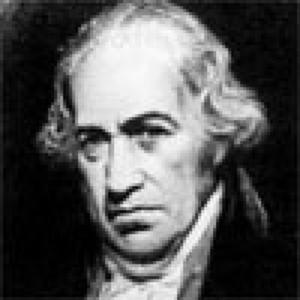<Back to Index>
- Physicist Daniel Gabriel Fahrenheit, 1686
- Painter Thomas Gainsborough, 1727
- Dictator of Pakistan Muhammad Ayub Khan, 1907

Daniel Gabriel Fahrenheit (14 May 1686 – 16 September 1736) was a German physicist and engineer who determined a temperature scale now named after him.
Fahrenheit was born in 1686 in Gdańsk (German: Danzig), Royal Prussia, a province of the Polish-Lithuanian Commonwealth, but lived most of his life in the Dutch Republic. The Fahrenheits were a Hanse merchant family who had lived in several Hanseatic cities. Fahrenheit's great-grandfather had lived in Rostock, and research suggests that the Fahrenheit family originated in Hildesheim. Daniel's grandfather moved from Kneiphof (Knipawa) (in Königsberg (Królewiec)) to Danzig and settled there as a merchant in 1650. His son, Daniel Fahrenheit, married Concordia (widowed name, Runge), daughter of the well-known Danzig business family of Schumann. Daniel Gabriel was the eldest of the five Fahrenheit children (two sons, three daughters) who survived childhood. His sister, Virgina Elisabeth Fahrenheit, married Benjamin Ephraim Krueger of a patrician family of Danzig.
At age 16, Daniel Gabriel Fahrenheit began training as a merchant in Amsterdam after
his parents died on August 14 in 1701 from "accidentally" eating
poisonous mushrooms. However, Fahrenheit's interest in natural science
caused him to begin studies and experimentation in that field. From
1707, he traveled to Berlin, Halle, Leipzig, Dresden, Copenhagen, and also to his hometown, where his brother still lived. During that time, Fahrenheit met or was in contact with Ole Rømer, Christian Wolff, and Gottfried Leibniz. In 1717, Fahrenheit settled in The Hague with the trade of glassblowing, making barometers, altimeters, and thermometers. From 1718 onwards, he lectured in chemistry in Amsterdam. He visited England in 1724 and became a member of the Royal Society. Fahrenheit died in The Hague and was buried there at the Kloosterkerk (Cloister Church). According
to Fahrenheit's 1724 article, he determined his scale by reference to
three fixed points of temperature. The lowest temperature was achieved
by preparing a frigorific mixture of ice, water, and ammonium chloride (a
salt), and waiting for it to reach equilibrium. The thermometer then
was placed into the mixture and the liquid in the thermometer allowed
to descend to its lowest point. The thermometer's reading there was
taken as 0 °F. The second reference point was selected as the
reading of the thermometer when it was placed in still water when ice
was just forming on the surface. This
was assigned as 32 °F. The third calibration point, taken as 96
°F, was selected as the thermometer's reading when the instrument
was placed under the arm or in the mouth. Fahrenheit
noted that mercury boils around 600 degrees on this temperature scale.
Work by others showed that water boils about 180 degrees above its
freezing point. The Fahrenheit scale later was redefined to make the
freezing-to-boiling interval exactly 180 degrees, a convenient value as 180 is a highly composite number,
meaning that it is evenly divisible into many fractions. It is because
of the scale's redefinition that normal body temperature today is taken
as 98.6 degrees, whereas it was 96 degrees on Fahrenheit's original
scale. Until the switch to the Celsius scale, the Fahrenheit one was widely used in Europe.
It is still used for everyday temperature measurements by the general
population in the United States and Belize and, less so, in the UK and
Canada.